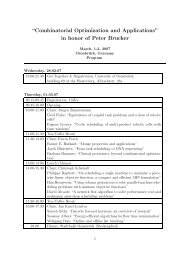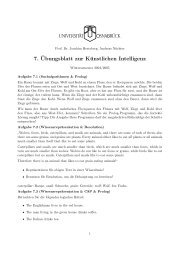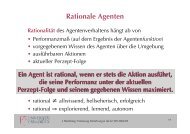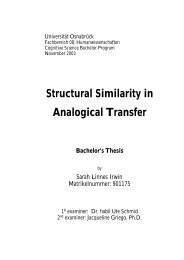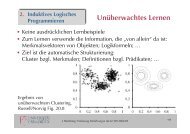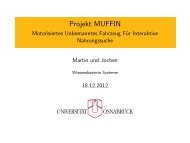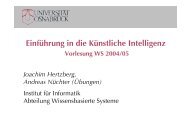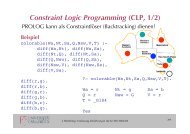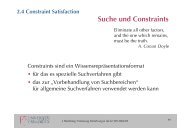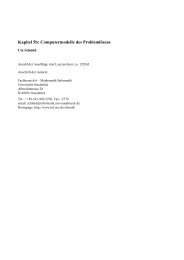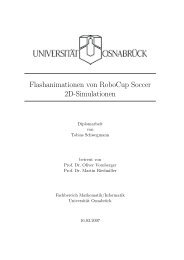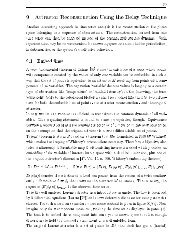Unsupervised Recursive Sequence Processing - Institute of ...
Unsupervised Recursive Sequence Processing - Institute of ...
Unsupervised Recursive Sequence Processing - Institute of ...
You also want an ePaper? Increase the reach of your titles
YUMPU automatically turns print PDFs into web optimized ePapers that Google loves.
too much contortion. A global isometric embedding, however, is not possible in<br />
general. Interestingly, for all such tessellations a data similarity measure is defined<br />
and possibly non-isometric visualization in the 2D plane can be achieved. While 6<br />
neighbors per neuron lead to standard Euclidean triangular meshes, for a grid with<br />
7 neighbors or more, the graph becomes part <strong>of</strong> the 2-dimensional hyperbolic plane.<br />
As already mentioned, exponential neighborhood growth is possible and hence an<br />
adequate data representation can be expected for the visualization <strong>of</strong> domains with<br />
a high connectivity <strong>of</strong> the involved objects. SOM with hyperbolic neighborhood<br />
(HSOM) has already proved well-suited for text representation as demonstrated for<br />
a non-recursive model in [29].<br />
3 SOM for sequences (SOM-S)<br />
In the following, we introduce the adaptation <strong>of</strong> SOMSD for sequences and the<br />
general triangular grid structure, SOM for sequences (SOM-S). Standard SOMs<br />
operate on a rectangular neuron grid embedded in a real-valued vector space. More<br />
flexibility for the topological setup can be obtained by describing the grid in terms<br />
<strong>of</strong> a graph: neural connections are realized by assigning each neuron a set <strong>of</strong> direct<br />
neighbors. The distance <strong>of</strong> two neurons is given by the length <strong>of</strong> a shortest path<br />
within the lattice <strong>of</strong> neurons. Each edge is assigned the unit length 1. The number <strong>of</strong><br />
neighbors might vary (also within a single map). Less than 6 neighbors per neuron<br />
lead to a subsiding neighborhood, resulting in graphs with small numbers <strong>of</strong> nodes.<br />
Choosing more than 6 neighbors per neuron yields, as argued above, an exponential<br />
increase <strong>of</strong> the neighborhood size, which is convenient for representing sequences<br />
with potentially exponential context diversification.<br />
Unlike standard SOM or HSOM, we do not assume that a distance preserving embedding<br />
<strong>of</strong> the lattice into the two dimensional plane or another globally parameterized<br />
two-dimensional manifold with global metric structure, such as the hyperbolic<br />
plane, exists. Rather, we assume that the distance <strong>of</strong> neurons within the grid<br />
is computed directly on the neighborhood graph, which might be obtained by any<br />
non-overlapping triangulation <strong>of</strong> the topological two-dimensional plane. 4 For our<br />
experiments, we have implemented a grid generator for a circular triangle meshing<br />
around a center neuron, which requires the desired number <strong>of</strong> neurons and the<br />
neighborhood degree n as parameters. Neurons at the lattice edge possess less than<br />
n neighbors, and if the chosen total number <strong>of</strong> neurons does not lead to filling up<br />
the outer neuron circle, neurons there are connected to others in a maximum symmetric<br />
way. Figure 1 shows a small map with 7 neighbors for the inner neurons,<br />
and a total <strong>of</strong> 29 neurons perfectly filling up the outer edge. For ≥ 7 neighbors, the<br />
exponential neighborhood increase can be observed, for which an embedding into<br />
4 Since the lattice is fixed during training, these values have to be computed only once.<br />
12





